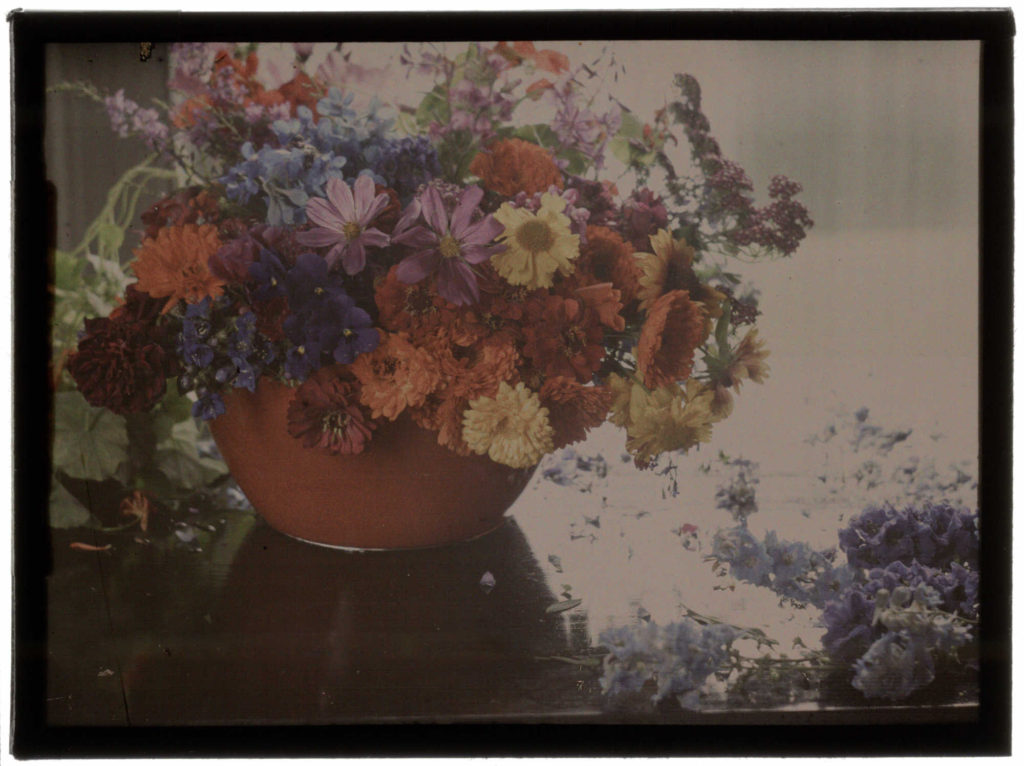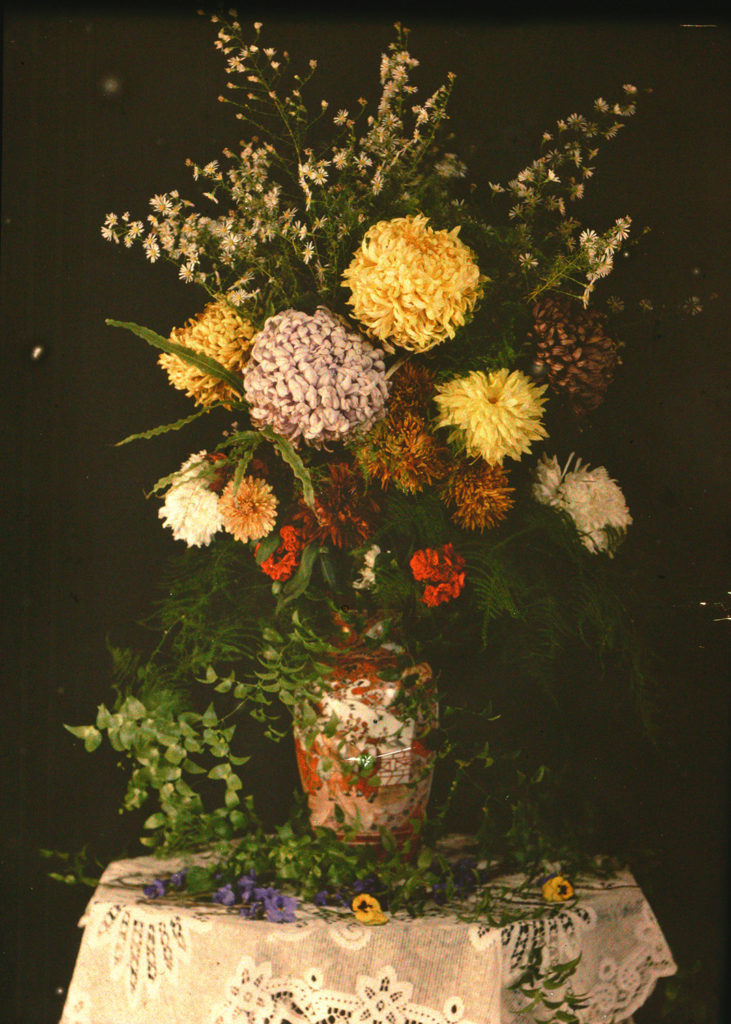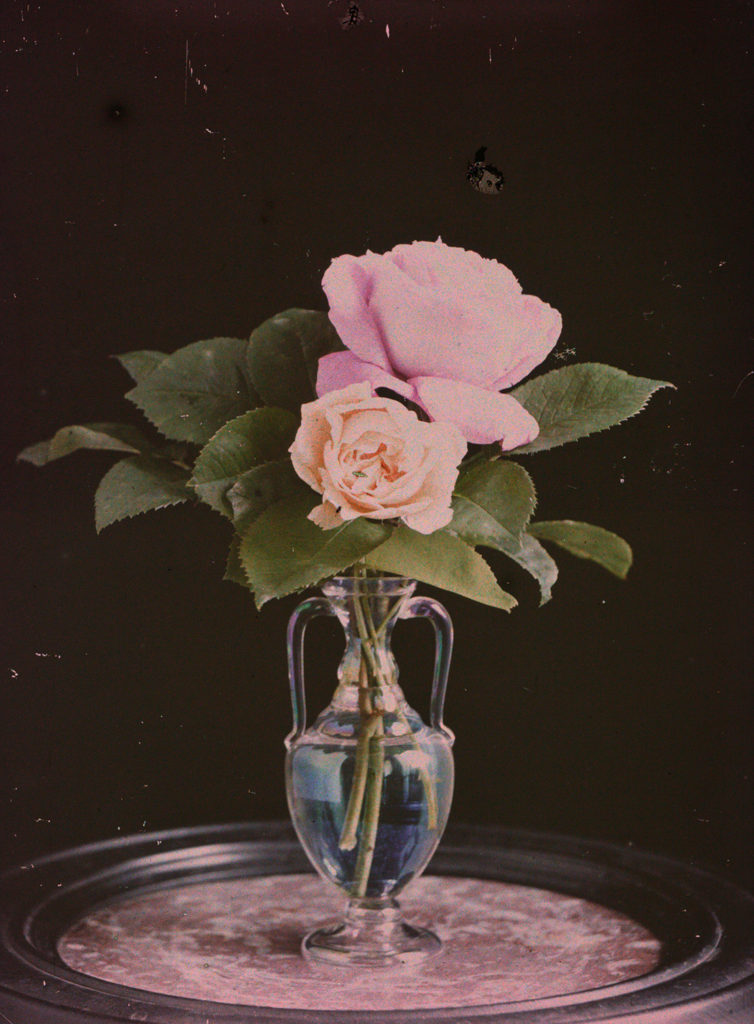History of colour photography and the Autochrome:
In 1839, when photographs were seen by the public for the first time, people were disappointed that colour had not been recorded. As an alternative to this artists began to hand colour monochrome prints.

Hand colouring monochromes continued to be popular as it cheap, however it did require a steady hand and it was often difficult to mimic the exact colour and shades of real life.
Before colour could be recorded in prints it had to be understood how colour actually worked. In 1861, Scottish physicist, James Clerk Maxwell conducted an experiment that proved that all colours could be made up of a combination of red, green and blue light. Unfortunately, Maxwell’s idea only worked for the first time practically out of sheer luck, but he had planted the seed for future ideas for successful colour photography.
In the years leading up to the invention of the autochrome, there were several attempted to create colour prints. Dr. John Joly came the closest to commercial success, however the plates used had a very limited sensitivity to colour.
At the beginning of the 20th century, after experimenting with colour prints since the 1890s, the Lumière brothers gave their first presentation of the autochrome to the French Academy of Science in 1904. By 1907, the autochrome was being produced commercially and the best part about them was that photographers could use their existing cameras.
So, how did it all work? During the manufacturing process of the autochrome plate, tiny grains of potato starch were dyed red, green or blue then spread out evenly on a glass plate. Next the plate was coated in a sticky varnish. Charcoal powder was used to fill in the gaps between the starch grains.The starch and charcoal was then flattened used a small roller. Finally, three coloured filter screens were placed on top of the glass plate and was coated with a panchromatic emulsion.

In use, autochrome plate required between 1 and 30 seconds exposure time. When taken light would pass through the colour filters of the plate to create an accurate display of the real life colours.

Emile F. Guiton:
Emile Guiton was a Jersey photographer who was particularly active during the German Occupation. However, his interest in photographs began long before this. Guiton was keen to experiment with colour after the creation of the autochrome in 1904. Stored at La Société Jersiaise, many of Guiton’s autochromes show assortments of flowers.


